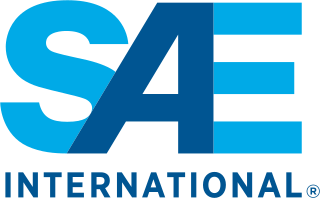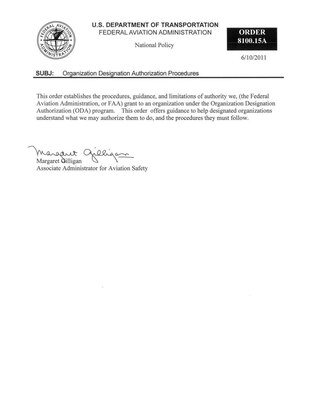Related Research Articles

ETOPS is an acronym for Extended-range Twin-engine Operations Performance Standards—a special part of flight rules for one-engine-inoperative flight conditions. The International Civil Aviation Organization (ICAO) coined the acronym for twin-engine aircraft operation in airspace further than one hour from a diversion airport at the one-engine-inoperative cruise speed, over water or remote lands, or on routes previously restricted to three- and four-engine aircraft.

A private pilot licence (PPL) or private pilot certificate is a type of pilot licence that allows the holder to act as pilot in command of an aircraft privately. The basic licence requirements are determined by the International Civil Aviation Organization (ICAO), but implementation varies from country to country. According to ICAO, an applicant must be at least 17 years old, demonstrate appropriate knowledge and skill, and hold at least a Class 2 medical certificate. Different PPLs are available for different categories of aircraft, such as aeroplane, helicopter, airship, etc, and are not interchangeable, although experience from a PPL in one category may be credited towards the issue of another.

The PowerJet SaM146 is a turbofan engine produced by the PowerJet joint venture between Snecma (Safran) of France and NPO Saturn of Russia. Developing 68–80 kN (15,000–18,000 lbf) of thrust, the SaM146 is used on the Sukhoi Superjet 100.

The European Union Aviation Safety Agency (EASA) is an agency of the European Union (EU) with responsibility for civil aviation safety. It carries out certification, regulation and standardisation and also performs investigation and monitoring. It collects and analyses safety data, drafts and advises on safety legislation and co-ordinates with similar organisations in other parts of the world.

The Eclipse 500 is a very light jet (VLJ) originally produced by Eclipse Aviation of Albuquerque, New Mexico, United States. The company was founded in 1998 to develop the 1997 Williams V-Jet II demonstrator. The prototype first flew with Williams EJ22 turbofans on August 26, 2002. The engines were replaced by Pratt & Whitney Canada PW610Fs in 2004 and Eclipse Aviation won the Collier Trophy in February 2006 for the design. A provisional FAA type certification was received on 27 July 2006 and the first delivery occurred on 31 December 2006.

A type certificate signifies the airworthiness of a particular category of aircraft, according to its manufacturing design. Certification confirms that the aircraft of a new type intended for serial production is in compliance with applicable airworthiness requirements established by the national air law.

ARP4754, Aerospace Recommended Practice (ARP) ARP4754A, is a guideline from SAE International, dealing with the development processes which support certification of Aircraft systems, addressing "the complete aircraft development cycle, from systems requirements through systems verification." Revision A was released in December 2010. It was recognized by the FAA in AC 20-174 published November 2011. EUROCAE jointly issues the document as ED–79.

An electronic flight bag (EFB) is an electronic information management device that helps flight crews perform flight management tasks more easily and efficiently with less paper providing the reference material often found in the pilot's carry-on flight bag, including the flight-crew operating manual, navigational charts, etc. In addition, the EFB can host purpose-built software applications to automate other functions normally conducted by hand, such as take-off performance calculations. The EFB gets its name from the traditional pilot's flight bag, which is typically a heavy documents bag that pilots carry to the cockpit.
An aircraft part is an article or component approved for installation on a type-certificated aircraft. Approval for these parts is derived from the jurisdictions of the countries that an aircraft is based. In the United States, the Federal Aviation Administration oversees the approval for these parts under Federal Aviation Regulation Part 21.
Parts Manufacturer Approval (PMA) is an approval granted by the United States Federal Aviation Administration (FAA) to a manufacturer of aircraft parts.
The European Organisation for Civil Aviation Equipment (EUROCAE) is an international organisation that deals exclusively with aviation standardisation, for both airborne and ground systems and equipment. It was created in 1963 in Lucerne, Switzerland by a decision of the European Civil Aviation Conference as a European forum focusing on electronic equipment for air transport. The organisation's offices are based in Saint-Denis, France near Paris.

In aviation, airworthiness is the measure of an aircraft's suitability for safe flight. Initial airworthiness is demonstrated by a certificate of airworthiness issued by the civil aviation authority in the state in which the aircraft is registered, and continuing airworthiness is achieved by performing the required maintenance actions.

A type rating is an authorization entered on or associated with a pilot license and forming part thereof, stating the pilot's privileges or limitations pertaining to certain aircraft type. Such qualification requires additional training beyond the scope of the initial license and aircraft class training.

An air operator's certificate (AOC) is the approval granted by a civil aviation authority (CAA) to an aircraft operator to allow it to use aircraft for commercial purposes. This requires the operator to have personnel, assets, and system in place to ensure the safety of its employees, and the general public. The certificate will list the aircraft types, and registrations to be used, for what purpose and in what area such as specific airports or geographic region.
The Modification and Replacement Parts Association is the Washington, D.C.-based trade association that represents manufacturers of government-approved after market aircraft parts. These aircraft parts are often known as PMA parts, from the acronym for Parts Manufacturer Approval. The manufacture of PMA parts is regulated in the United States by the Federal Aviation Administration.

The Organization Designation Authorization (ODA) program was established by FAA Order 8100.15 . The ODA, in conjunction with the FAA, grants airworthiness designee authority to organizations or companies. The regulations addressing the ODA program are found in Title 14 of the Code of Federal Regulations part 183, subpart D, sections 183.41 through 813.67.

The Boeing 737 MAX was initially certified in 2017 by the U.S. Federal Aviation Administration (FAA) and the European Union Aviation Safety Agency (EASA). Global regulators grounded the plane in 2019 following fatal crashes of Lion Air Flight 610 and Ethiopian Airlines Flight 302. Both crashes were linked to the Maneuvering Characteristics Augmentation System (MCAS), a new automatic flight control feature. Investigations in both crashes determined that Boeing and the FAA favored cost-saving solutions, but ultimately produced a flawed design of the MCAS instead. The FAA's Organization Designation Authorization program, allowing manufacturers to act on its behalf, was also questioned for weakening its oversight of Boeing.
Certification Review Item (CRI) is a document describing an item that requires disposition prior to the issuance of Type Certificate (TC), change to TC approval or Supplemental Type Certificate (STC) by European Aviation Safety Agency (EASA).

FAA Order 8110.37 , Designated Engineering Representative (DER) Handbook, is a handbook of procedures, technical guidelines, limitations of authority, and tools and resources for Designated Engineering Representatives (DERs) appointed by the Federal Aviation Administration. The handbook's purpose is to give both DERs and the FAA offices managing them a better understanding of their individual and mutual roles and responsibilities in the certifications of safety of aircraft and aviation systems. Although intended for the roles of DERs, this order may be useful to ODA engineering Unit Members, who are effectively DERs managed by aviation manufacturers rather than by the FAA.
References
- ↑ FAA. "Installation of TSO'd Product Considerations and Guidance" (PDF). Archived from the original (PDF) on 26 April 2014.
- ↑ "CFR 2011, Title 14, Volume 1, Part 21, Subpart O" (PDF).
- ↑ EASA (31 March 2023). "ETSO".
- ↑ "FAA Technical Standard Order Authorization (TSOA) and EASA European TSOA (ETSOA) Reciprocal Acceptance Frequently Asked Questions (FAQs)" (PDF). Archived from the original (PDF) on 28 June 2023.